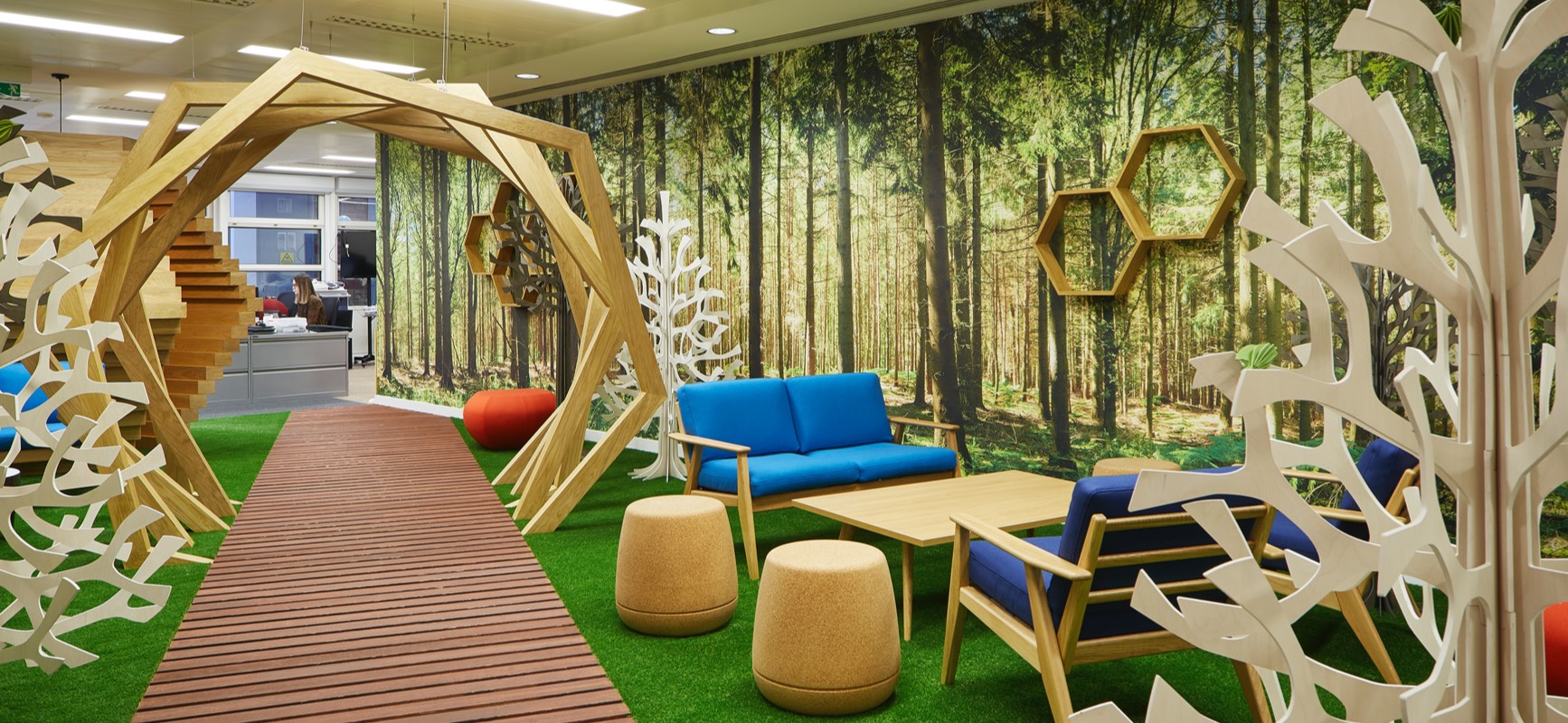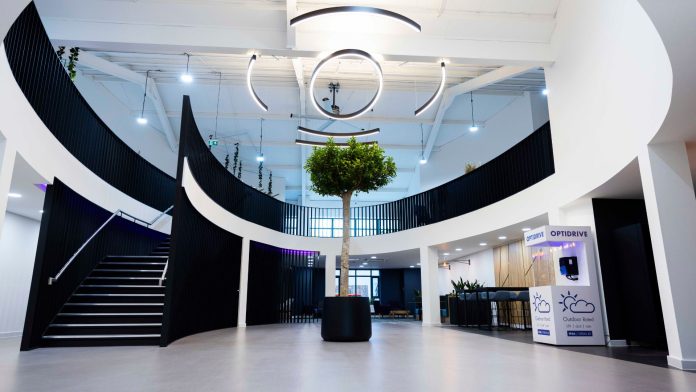As the gloomy economy continues to cause some business leaders to cull the flexible working arrangements made in the last three years, the consensus is that we could be the midst of ‘the Great Return.’ Here, Howard Barnes, below, creative lead at Rhino Interiors Group, explores how SMEs can create an office environment which is not so much an obligation but a destination of choice
 It would seem that the tides are once again turning in the modern workplace era. While the pandemic-induced remote working experiment may have put pressure on employers to offer more flexible working arrangements or face the wrath of the ‘Great Resignation’, things are changing. Indicative of this, recent figures show that the number of remote opportunities has passed its peak, with the amount of people working exclusively from home in the UK having decreased by 14% from 2022 to 2023.
It would seem that the tides are once again turning in the modern workplace era. While the pandemic-induced remote working experiment may have put pressure on employers to offer more flexible working arrangements or face the wrath of the ‘Great Resignation’, things are changing. Indicative of this, recent figures show that the number of remote opportunities has passed its peak, with the amount of people working exclusively from home in the UK having decreased by 14% from 2022 to 2023.
And it’s easy to see why. Faced with challenging economic conditions and ongoing uncertainty, many businesses are trying to re-establish a sense of control and claw back power from employees by stipulating more in-office days and set schedules. Chances are this is even more relevant for SMES given that well over half (57%) stated they were expecting employees to return to the workplace full-time last year.
However, it’s important that business leaders do not rush into this transition. After all, out of lockdown has arisen a new breed of employee, one accustomed to a greater level of freedom, who puts their wellbeing first and wants more from their working environment. Get it wrong, and the impact to recruitment and retention levels could be significant.
With this it becomes vital that organisations boldly question long-held assumptions about how work should be done and the role of the office:
- Understand the office dynamic
An effective hybrid design should create a space that transcends physical and social barriers, creating a much more flexible workspace where groups and teams can collaborate freely as needed and be more creative with each other in person and online.
 To achieve this effectively, it’s about understanding exactly what your office needs to do. What are the most important processes for each major business division and function? When and where do most team meetings happen and how often? What type of work can be accomplished better at home or in the office? If, for example, the primary purpose of the office space is to accommodate teamwork rather than individual tasks it might be better to devote 75 per cent of the space to large, open, collaborative space.
To achieve this effectively, it’s about understanding exactly what your office needs to do. What are the most important processes for each major business division and function? When and where do most team meetings happen and how often? What type of work can be accomplished better at home or in the office? If, for example, the primary purpose of the office space is to accommodate teamwork rather than individual tasks it might be better to devote 75 per cent of the space to large, open, collaborative space.
Importantly too, it’s always recommended to take employees on the journey, asking for their feedback and input as to how to reenvisage the office in the most effective way possible.
- Reconfigure to support specific priorities
With this intel on board, the next step is to intentionally reconfigure the workplace to meet this need and support specific business priorities. Here flexibility will be the name of the game, with an onus on configurable office furniture that is easy to move around and can be easily adapted and flexed as needs evolve – whether it’s to create an impromptu team huddle area for sharing ideas or a small informal area for one-to-one meetings. Alongside this, movable boundaries – such as screens and panels and planting – will play a vital role in enabling an added level of privacy as needs dictate.
Put simply, it’s about going much further than providing just a desk. Rather, it’s about enabling employees to choose their workday, through spaces that offer variety and differentiation depending on the scope of task in hand.
- Blend the physical and virtual
With the office configuration in place, the next focus should centre on finding new ways to merge the physical and the virtual for a more seamless office experience. After all, many of us will have experienced dialling into a Zoom call only to be presented on full display to what appears to be the entire boardroom. This approach can prove both daunting and isolating for working-from-home colleagues, and cause them to feel less engaged. This is even more pertinent for creative work, such as brainstorming sessions, where remote workers may feel less involved without the physical cues afforded by the office – such as physical gestures and body language and limited oversight of tools such as screens and white boards.
The answer lies in rethinking how the physical and virtual office spaces can be meshed together. For example, most conference rooms tend to feature a long table with a monitor at the end. In this way, in-person attendees will sit around the table while remote workers will feature as small grids on the screen. To level the playing field, a much better approach is to equip all participants the virtual technology to both see and hear each other the same way whether its in-person or remotely. Another good tip for is to set up a monitor and webcam in the office to ensure remote team members are ‘there’ for all ad-hoc conversations during working hours and feel involved.
- Create a destination of choice
Ultimately, it’s about creating a workplace that – while an obligation – is as much a destination of choice. A place where employees collaborate, innovative, thrive and love to work.
Here, design cues such as warmer lighting, softer acoustics and purposefully chosen colourways can create a place which intuitively feels welcoming and collaborative. More so, the clever integration of natural light, fresh air and greenery can prove incredibly powerful in creating a calming, homely atmosphere, while ‘little’ extras such as high spec kitchens and coffee stations are also enduringly inviting.
- Keep the fluffy slippers for home
All too often employers may be inclined to introduce ‘sweeteners’ to make the transition to office working more appealing. This can take the shape of free lunches, after-work drinks on the company, free manicures, meditation sessions and – yes – even fluffy slippers.
However, in our experience while some of these types of schemes are welcomed (food and drink always goes down well) others don’t really make a difference. In fact, in some cases they can work to the opposite effect, reminding employees of what they are missing out on from no longer working at home.
Rather, to get employees on side, it’s all about creating a dynamic, productive and flexible workspace which enables them to work smarter not harder and that they love working in.
Yes the ‘Great Return’ may initially come as a grievance for some employees accustomed to working from the comfort of their own home. Our experience shows that the key factor is the people – it is the buzz and energy of the team that people are missing, so by creating a place that entices, inspires and excites, it’s possible to make this transition a more enjoyable one for all.


